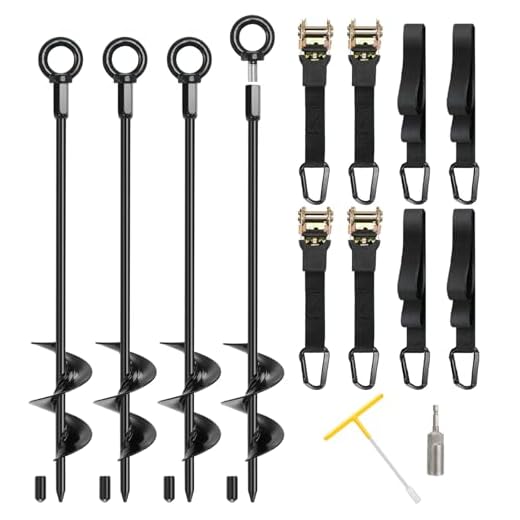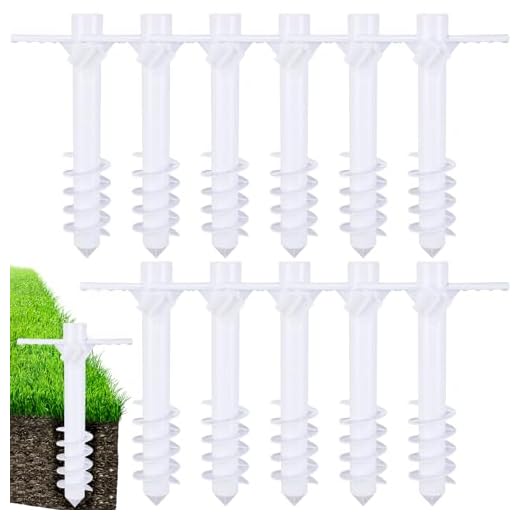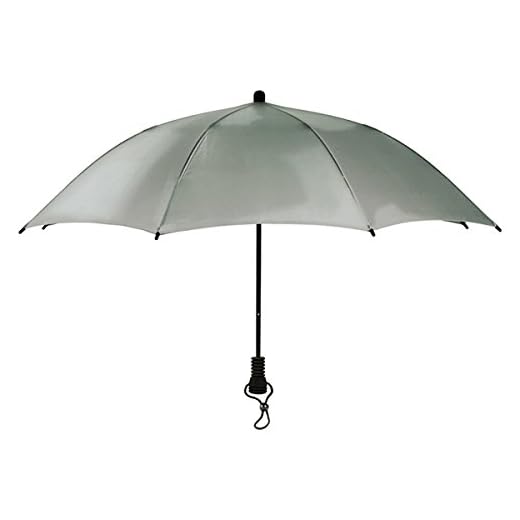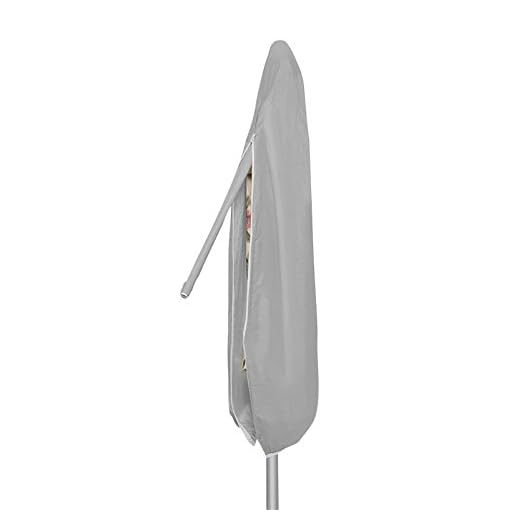




To ensure your patio canopy remains intact against wind and weather, invest in a high-quality base or weighted stand. This simple yet effective measure will keep your shade provider steadfast and prevent it from toppling over during storms. In this article, I will outline practical techniques and tools that can help maintain the stability of your outdoor shade solution.
This guide is tailored for homeowners and outdoor enthusiasts seeking reliable methods to protect their shade structures. Whether you have a large market-style canopy or a compact pop-up, the strategies discussed here will empower you to make informed decisions about securing your investment.
From selecting the right anchoring system to employing additional safety measures like tie-downs and wind-resistant designs, I will cover various aspects to consider. By following these recommendations, you can enjoy peace of mind knowing your shade solution is well-protected and ready for use at any time.
Best Method to Stabilize Your Patio Canopy
Utilizing a weighted base is one of the most reliable tactics to keep your patio canopy firmly in place. These bases can be filled with sand or water, providing substantial support against strong winds. Ensure that the weight is adequate for the size of the canopy; a heavier base is particularly beneficial for larger models.
Another effective strategy involves securing the canopy to a fixed structure, such as a deck or wall. Using brackets or straps can provide additional stability during inclement weather. This method minimizes movement and reduces the risk of damage to both the canopy and surrounding areas.
Additional Techniques for Enhanced Stability
- Use Ties and Straps: Tie-downs can be attached to the poles of the canopy and anchored to the ground. This adds another layer of support.
- Consider Windbreaks: Planting tall plants or installing wind barriers can help shield the canopy from harsh winds, reducing the likelihood of it being blown away.
- Regular Maintenance: Inspect the canopy regularly for any wear and tear. Ensuring that all components are in good condition can prevent unexpected failures.
In summary, employing a combination of weighted bases, secure attachments, and protective measures can significantly enhance the stability of your patio shelter. Adopting these practices will help you enjoy your outdoor space without worrying about unpredictable weather conditions.
Choosing the Right Base for Stability
For a reliable setup, selecting an appropriate base is fundamental. A stable support prevents tipping and ensures that your shade structure stands firm against wind and weather conditions.
Consider the weight and material of the base. A heavier base, made of concrete or metal, provides superior stability. It’s advisable to look for options that offer adjustable weights, allowing for customization based on specific environmental factors.
Types of Bases
There are several types of bases available, each with distinct advantages:
- Weighted Bases: These are often filled with sand or water, providing a sturdy foundation. Ensure the material is durable and weather-resistant.
- In-ground Systems: For permanent setups, in-ground bases offer exceptional stability. They require more installation effort but are ideal for long-term use.
- Portable Bases: Lightweight and convenient for temporary arrangements. However, they may need additional weights to enhance stability.
When evaluating options, take into account the size and design of the shade apparatus. A larger canopy will necessitate a more substantial base. Always check the manufacturer’s recommendations for weight requirements to ensure optimal performance.
Finally, consider the surface where the base will be placed. Soft ground may require additional anchoring, while hard surfaces can accommodate heavier bases without issues. Assess your environment and choose a base that complements both functionality and aesthetic appeal.
Utilizing Wind Umbrella Anchors Effectively
To ensure stability during breezy conditions, utilizing wind anchors is a practical approach. These devices provide a secure hold for your canopy, minimizing the risk of it tipping over or being damaged by strong gusts.
Select a suitable anchor based on your setup. Some options include weighted bases, ground stakes, or sandbags. Each type offers unique benefits depending on the environment and the model of your canopy.
Choosing the Right Anchor Type
Consider the following factors when selecting an anchor:
- Weight: Heavier anchors offer better stability on windy days, while lighter options are easier to transport.
- Material: Durable materials can withstand harsh weather conditions, ensuring longevity.
- Ease of Use: Quick setup and takedown features can save time and effort.
After selecting the appropriate anchor, position it correctly. Ensure the anchor is placed directly beneath the base of the canopy to distribute the weight evenly. For models that allow for it, use additional straps for added security.
Maintenance and Storage
Regularly inspect your wind anchors for wear and tear. Replace any damaged components to maintain performance. During storage, keep anchors in a dry place to prevent rust or degradation.
Utilizing wind anchors effectively not only protects your canopy but also enhances your outdoor experience. A stable setup allows for relaxation and enjoyment without the worry of unexpected movement.
Implementing Safety Straps for Added Security
Attaching safety straps to your canopy can significantly enhance its stability in varying weather conditions. These straps act as an additional layer of protection, preventing the fabric from collapsing or becoming dislodged during strong winds.
Choose durable materials for the straps, such as heavy-duty nylon or polyester, which can withstand outdoor elements. Ensure that the straps are adjustable to fit different sizes and designs of canopies, allowing for a snug fit.
Installation Tips
To effectively implement safety straps, follow these steps:
- Locate the anchor points on the frame of your canopy where the straps can be securely attached.
- Thread the strap through the designated loop or hook and tighten it to eliminate slack.
- Ensure that the strap is taut but not overly tight to avoid damaging the fabric.
- Regularly check the condition of the straps and replace any that show signs of wear.
By incorporating these straps, you can enhance the longevity and performance of your outdoor shade solution while minimizing the risks associated with unexpected gusts of wind.
Regular Maintenance Tips to Prevent Damage
Inspecting the structure regularly is crucial for longevity. Look for any signs of wear or damage to the fabric and frame. Small issues can escalate quickly if not addressed promptly.
Cleaning your canopy frequently helps maintain its appearance and prevents mold or mildew buildup. Use a mild soap solution and a soft brush to remove dirt and stains.
Recommendations for Maintenance
- Store Properly: When not in use, collapse and store the shade provider in a dry location. This minimizes exposure to harsh weather.
- Check for Rust: Inspect metal parts for rust; treat or repaint as needed to avoid deterioration.
- Reinforce Stress Areas: Apply fabric patches to any worn spots to extend the life of the canopy.
- Use a Cover: Invest in a protective cover to shield against dust and debris when stored.
- Inspect Mechanisms: Regularly check the opening and closing mechanisms for smooth operation and lubrication.
Implementing these practices will greatly reduce the risk of damage, ensuring your shade solution remains functional and visually appealing for many seasons.
Best way to secure outdoor umbrella
Features
| Part Number | FUB41B |
| Model | FUB41B |
| Color | Black |
| Release Date | 2023-12-22T00:00:01Z |
Features
| Part Number | DMZD-450-4 |
| Model | DMZD-450-4 |
| Color | black |
| Size | 4PCS |
Features
| Part Number | RRY-Briwooody-1585 |
| Model | RRY-Briwooody-1585 |
| Color | white |
Features
| Part Number | W2L69027-SILVER |
| Model | W2L69027-SILVER |
| Color | Silver |
| Size | Medium |
Features
| Part Number | 1174 |
| Model | 1174 |
| Warranty | 3 YEAR PRORATED |
| Color | Gray |
| Release Date | 2006-05-15T00:00:01Z |
| Size | 8.5-11 ft |
Video:
FAQ:
What are the best materials for securing an outdoor umbrella?
To securely fasten an outdoor umbrella, consider using a sturdy base made of heavy materials such as concrete or steel. These materials provide stability and prevent the umbrella from tipping over in windy conditions. Additionally, look for bases that can be filled with water or sand, which adds extra weight. It’s also advisable to choose an umbrella with a durable fabric that can withstand UV rays and weather elements, ensuring longevity and reliability.
How can I prevent my outdoor umbrella from blowing away during storms?
To prevent your outdoor umbrella from being blown away during storms, ensure that it is anchored securely with a heavy base. If possible, invest in an umbrella that has a wind-resistant design, which often includes features like vented canopies that allow wind to pass through. Additionally, consider retracting or securing the umbrella when severe weather is forecasted. Using tie-downs or straps can also help keep the umbrella in place during strong winds.
Are there specific techniques for maintaining an outdoor umbrella to ensure its longevity?
Maintaining your outdoor umbrella involves several key techniques. First, regularly clean the fabric with mild soap and water to prevent mold and mildew buildup. Ensure that the umbrella is completely dry before closing it. During the off-season or in harsh weather, store the umbrella indoors or use a protective cover. Additionally, check the hardware for rust or wear and replace any damaged parts promptly. By practicing these maintenance tips, you can extend the life of your outdoor umbrella significantly.








